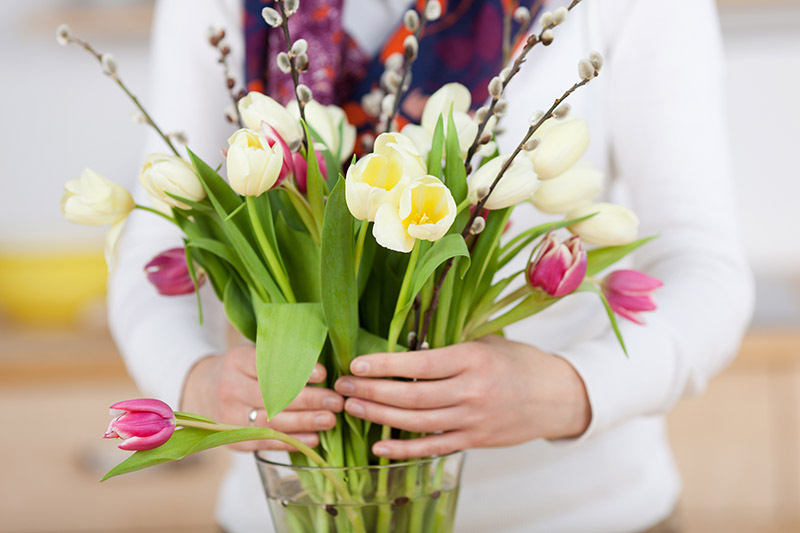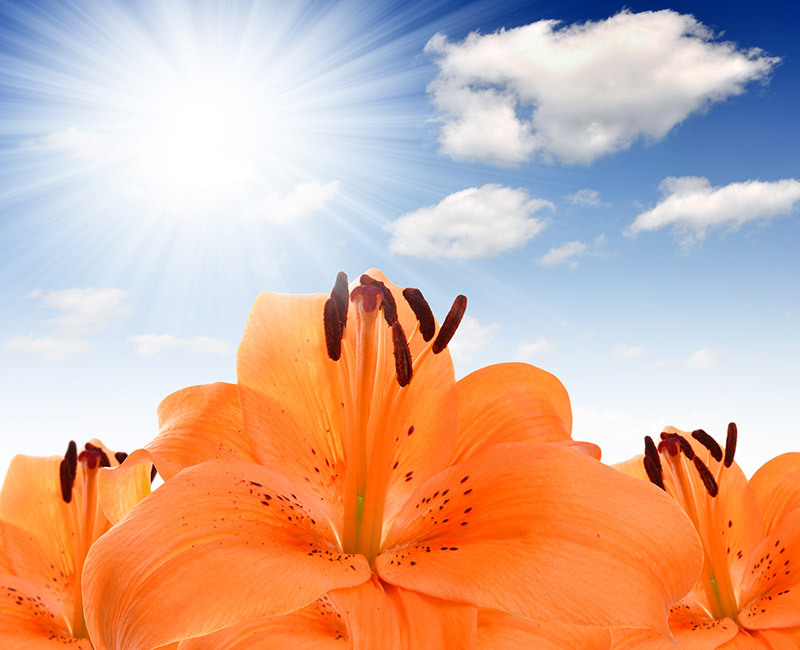Go Beyond the Basics with 8 Astonishing and Lesser-Known Sunflower Facts
Posted on 03/07/2025
Go Beyond the Basics with 8 Astonishing and Lesser-Known Sunflower Facts
Sunflowers are more than just vibrant blooms waving gently in summer fields. While their sunny appearance and symbolic association with happiness are well-known, these remarkable plants harbor secrets that go far beyond the surface. From their scientific marvels to their cultural significance worldwide, exploring the lesser-known facets of sunflowers can deepen your appreciation for these iconic flowers.
In this comprehensive article, we will delve into eight astonishing sunflower facts that set this plant apart, providing you with a fresh perspective on a timeless favorite. Whether you are a garden enthusiast, a nature lover, or simply curious, get ready to discover a side of sunflowers you never knew existed!
1. Sunflowers Track the Sun--But Only When Young
One of the most fascinating Sunflower facts revolves around heliotropism, the ability of certain plants to move in response to the sun's position. Contrary to popular belief, not all sunflowers perform this dance.
- Young sunflower plants (before blooming) turn their faces east to west, following the sun's path throughout the day.
- Mature sunflowers stop moving and generally remain facing east. This orientation helps attract pollinators in the morning when the blooms are warmer than those facing other directions.
This remarkable adaptation is driven by differential growth rates on either side of the stem, controlled by the plant hormone auxin. Once the plant matures, this growth ceases, locking the flower in an eastern orientation.

2. Sunflowers Are Not Just One Flower, But Many
Did you know that a sunflower is not a single flower, but a composite of hundreds--or even thousands--of smaller flowers?
The familiar yellow "petals" are called ray florets, while the central disc contains disc florets, each capable of producing a seed.
- Each disc floret is a perfect flower: it has both male (stamens) and female (pistil) reproductive organs.
- The central spiral pattern is based on the Fibonacci sequence, optimizing packing for maximum seed production.
This botanical structure explains why sunflowers are such efficient seed producers, making them valuable for agriculture and wildlife alike.
3. Sunflowers Can Help Clean Up Environmental Disasters
Among the most astonishing sunflower facts is their ability to act as natural phytoremediators--plants that remove toxins from the environment.
After the Chernobyl nuclear disaster and Japan's Fukushima incident, sunflowers were planted extensively to absorb radioactive elements like cesium and strontium from contaminated soil and water.
- Sunflowers draw up toxins through their roots and store them in their stems and leaves.
- This process can help detoxify soils impacted by heavy metals or radiation, a crucial tool in environmental restoration.
Using sunflowers for soil remediation demonstrates their value beyond beauty or food--these flowers can help restore health to damaged ecosystems.
4. The Tallest Sunflower Ever Grown Was Over 30 Feet!
Enthusiastic gardeners have long tried to grow the world's tallest sunflowers, and the results are simply incredible.
According to the Guinness World Records, the tallest sunflower ever recorded was grown by Hans-Peter Schiffer in Germany, reaching a mind-blowing height of 30 feet and 1 inch (9.17 meters) in 2014.
- This record has been broken several times, with fierce competition in countries like Germany and the Netherlands.
- Growing sunflowers to such towering heights requires a combination of genetics, care, and favorable weather conditions.
So next time you plant a sunflower, remember you could be nurturing a future record-breaker!
5. Sunflowers Come in a Rainbow of Colors
Forget the stereotype that sunflowers are only yellow. There's a whole world of diversity in sunflower colors!
- Sunflowers can bloom in shades ranging from lemon yellow to deep burgundy, creamy white, orange, and even bi-colors.
- Varieties like 'Moulin Rouge', 'Italian White', and 'Autumn Beauty' display unique petal shades that can transform any garden.
These lesser-known sunflower varieties are prized by florists and garden enthusiasts seeking color variety and unique floral arrangements.
6. Sunflower Seeds Fuel the World--In Surprising Ways
When most people think of sunflower seeds, delicious snacks or bird food come to mind. However, sunflower seeds serve a far greater global purpose.
- Sunflower oil, pressed from the seeds, is one of the most popular cooking oils worldwide thanks to its mild flavor and heart-healthy properties.
- Sunflower seed meal, the by-product after oil extraction, is a high-protein animal feed.
- Sunflower seeds have also been researched as a potential biofuel source, underlining the plant's agricultural sustainability.
Aside from food and industry, sunflower seeds are packed with essential nutrients such as vitamin E, magnesium, and selenium, making them a nutritious addition to any diet.
7. Sunflowers Have Deep Roots in Culture and History
The sunflower is more than just a beautiful flower--it's a cultural symbol with ancient roots. Native to North America, sunflowers were cultivated by indigenous peoples over 4,500 years ago.
- Native Americans utilized sunflowers for food, dye, and medicinal purposes.
- During the 16th century, Spanish explorers brought sunflowers to Europe, where they became a staple ornament and crop.
In modern times, sunflowers continue to inspire art and symbolism. Consider Vincent van Gogh's iconic sunflower paintings or Ukraine's use of the sunflower as a national symbol of peace and unity.
8. Sunflowers Can Help Predict the Weather
Believe it or not, sunflowers have long been used as weather indicators by attentive gardeners and farmers.
- Before rain, sunflower heads and leaves may droop slightly, possibly adjusting to minimize water loss or avoid damage.
- Some folklore claims that when sunflowers face downward, rain is imminent.
While not a replacement for a weather app, observing sunflower behavior adds a unique, natural twist to traditional forecasting.

Frequently Asked Questions About Sunflowers
Are sunflowers annuals or perennials?
Most common sunflowers (Helianthus annuus) are annuals, meaning they complete their life cycle in a single growing season. However, there are also perennial sunflower species like Helianthus tuberosus (Jerusalem artichoke).
How many seeds does a sunflower produce?
A single large sunflower head can produce between 1,000 and 2,000 seeds, making sunflowers one of the most prolific seed producers in the plant world.
What is the best way to grow sunflowers?
For best results, plant sunflower seeds in full sun after the last frost. Sunflowers thrive in well-drained soil and benefit from regular watering, especially during early growth. Stake taller varieties to prevent wind damage.
What animals and insects benefit from sunflowers?
Sunflowers are beloved by pollinators such as bees and butterflies, while their seeds provide crucial nutrition for birds, squirrels, and other wildlife.
Conclusion: Sunflowers--A World of Wonder Beyond the Petals
As you can see, there is much more to sunflowers than their captivating appearance. With a blend of ecological impact, scientific wonder, historical significance, and practical uses, these plants deserve our admiration not only for their beauty but also for their astonishing versatility.
We hope these eight astonishing and lesser-known sunflower facts have inspired you to look at sunflowers with renewed curiosity. The next time you spot a bloom nodding beneath a blue sky, remember you are witnessing a botanical marvel with deep roots in our planet's natural and cultural landscape.
For more intriguing insights into plant life and garden wonders, keep exploring, and let the sunflower's story remind you--there's always more than meets the eye!
Latest Posts
Ideas for Reviving Your Cut Flower Bouquet
Engage With These 7 Amazing Facts About Tulips and Their Legacy
Understanding the Rich Symbolism in Peony Flower Hues
Embrace the Significance of Your Birth Flower and Yourself
Go Beyond the Basics with 8 Astonishing and Lesser-Known Sunflower Facts





